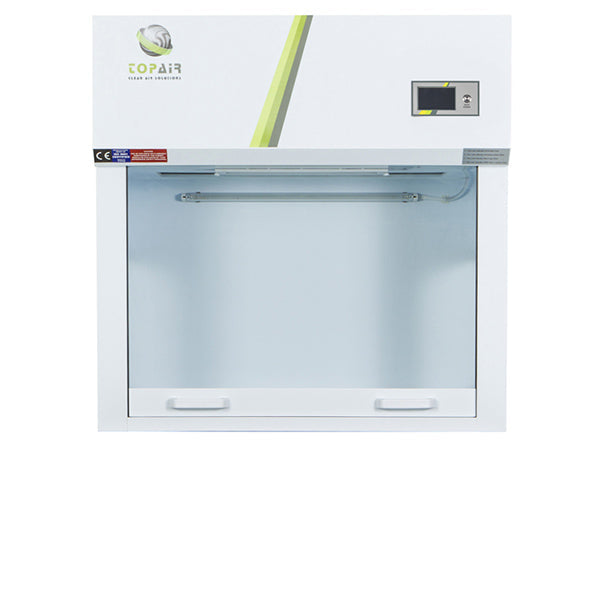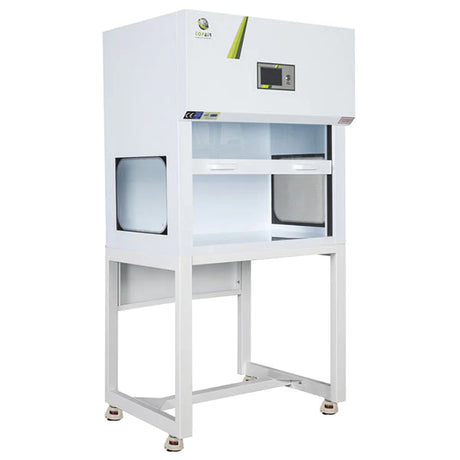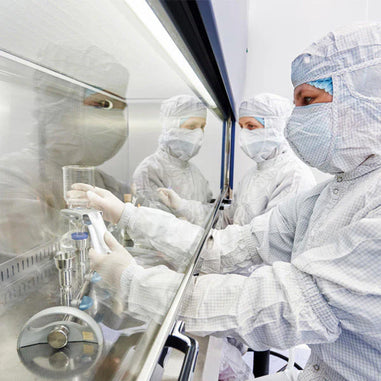- No products in the cart.
Polymerase Chain Reaction (PCR) has revolutionized molecular biology by enabling the amplification of DNA, a fundamental process in various scientific applications. Within the PCR workflow, maintaining a clean and controlled environment is crucial for accurate and reliable results. PCR cabinets play a pivotal role in creating the optimal setting for DNA amplification, ensuring precision and minimizing contamination risks.
Understanding the PCR Process
Before delving into the role of PCR cabinets, let's briefly understand the PCR process. PCR is a laboratory technique used to make multiple copies of a segment of DNA. This process involves cycles of denaturation, annealing, and extension, and it takes place in a thermal cycler. The success of PCR relies on the specificity of the primers and the cleanliness of the environment in which the reaction occurs.
Contamination Concerns in PCR
Contamination is the arch-nemesis of PCR. Even a trace amount of foreign DNA can compromise the accuracy of results, leading to false positives or negatives. Common sources of contamination include airborne DNA, aerosolized droplets, and DNA carryover from previous reactions. To address these challenges, PCR cabinets, also known as PCR workstations or hoods, are employed to create a controlled and sterile environment.
The Role of PCR Cabinets
-
Containment of Aerosols:
PCR cabinets are designed with laminar airflow to create a unidirectional, sterile environment. This airflow prevents the escape of aerosols, which may contain amplified DNA. This containment is essential not only for accurate results but also for the safety of researchers, as some DNA sequences may be hazardous.
-
HEPA Filtration:
High-Efficiency Particulate Air (HEPA) filters are a standard feature in PCR cabinets. These filters remove airborne particles, including dust, bacteria, and viruses, minimizing the risk of contamination. The use of HEPA filters ensures that the air within the cabinet is of the utmost purity, safeguarding the integrity of the PCR process.
-
UV Decontamination:
Many PCR cabinets are equipped with UV lights for decontamination. Before and after each use, researchers can expose the work surface to UV light, effectively eliminating any lingering DNA or contaminants. This additional layer of decontamination enhances the reliability of PCR results.
-
Positive Pressure Environment:
PCR cabinets are designed to maintain a positive pressure environment, preventing the entry of unfiltered air. This feature minimizes the risk of external contaminants entering the workspace during the DNA amplification process.
-
Ergonomic Design:
The ergonomic design of PCR cabinets contributes to user comfort and efficiency. The cabinets often include features such as adjustable shelves, integrated lighting, and easy-to-use controls, creating a user-friendly environment for researchers during the PCR workflow.
Choosing the Right PCR Cabinet

Selecting the appropriate PCR cabinet for a laboratory requires careful consideration of several factors:
-
Size and Configuration:
The size of the PCR cabinet should accommodate the laboratory's specific needs. Consider factors such as available space, the volume of PCR work, and the potential integration of additional equipment.
-
Airflow Design:
Different PCR cabinets may employ vertical or horizontal airflow. The choice depends on the specific requirements of the laboratory and the nature of the research being conducted.
-
UV Decontamination System:
Assess whether the cabinet includes a UV decontamination system and, if so, how it is integrated into the workflow. A reliable UV decontamination system adds an extra layer of assurance to the cleanliness of the workspace.
-
User-Friendly Features:
Evaluate the ergonomic features of the PCR cabinet, such as adjustable shelves, intuitive controls, and comfortable working height. A user-friendly design enhances the overall laboratory experience.
-
Compliance and Certification:
Ensure that the PCR cabinet complies with relevant safety standards and undergoes regular certification. Compliance with industry standards is crucial for maintaining a safe and effective working environment.
Conclusion
In the realm of molecular biology, precision is paramount, and PCR cabinets play a pivotal role in achieving this precision. By creating a controlled environment that minimizes the risk of contamination, these cabinets ensure the accuracy and reliability of DNA amplification. As laboratories continue to push the boundaries of scientific discovery, the importance of investing in quality PCR cabinets cannot be overstated.
When creating the optimal environment for DNA amplification, researchers must consider not only the technical specifications of PCR cabinets but also the ergonomic design and user-friendly features that contribute to a seamless workflow. The investment in a high-quality PCR cabinet is an investment in the integrity of research results, the safety of laboratory personnel, and the advancement of scientific knowledge.
As technology evolves, so too will the capabilities of PCR cabinets. Researchers can anticipate continued innovations that enhance both the efficiency and precision of the PCR process, reaffirming the crucial role these cabinets play in the world of molecular biology. Ultimately, by choosing the right PCR cabinet, laboratories can elevate their experiments, secure accurate results, and contribute to the ongoing success of scientific exploration.
For over 40 years, Lab Pro Inc. has been your reliable destination for premium cleanroom lab supplies, including top-notch PCR cabinets. Trusted by global industries, we offer exceptional quality in every product. Experience next-day service in California. Contact us online or at 888-452-2776 to explore tailor-made solutions for the laboratory industry. Elevate your experiments with Lab Pro Inc. – your partner in precision and excellence, now featuring biohazard safety cabinets.












































